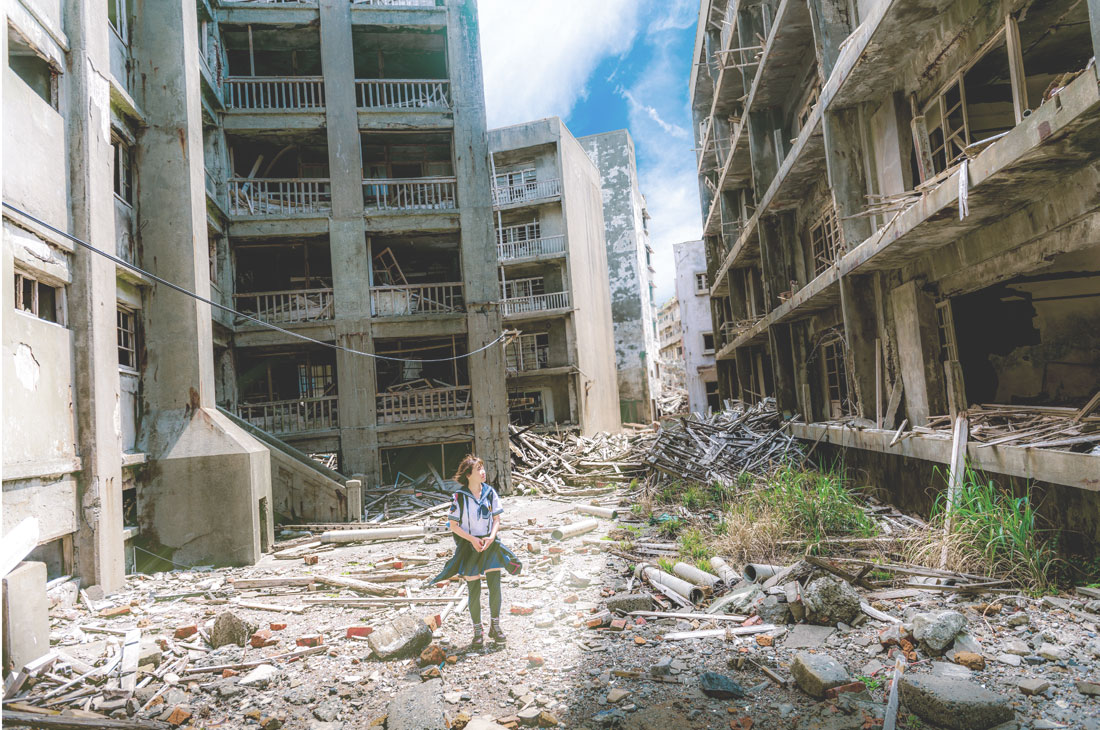Animals experience stress without trauma. Why is this so? All mammals, including humans, have an extremely effective survival strategy: the Fight Flight Freeze Response. In life-threatening situations your organism suddenly provides the necessary energy. This strategy has proven itself in evolution.
The Fight Flight Freeze Response consists of three phases:
Animals experience stress without trauma. Why is this so? All mammals, including humans, have an extremely effective survival strategy: the Fight Flight Freeze Response. In life-threatening situations your organism suddenly provides the necessary energy. This strategy has proven itself in evolution.
The Fight Flight Freeze Response consists of three phases:
|
Provide energy:
A dangerous situation can occur suddenly. Be it by a surprising attack from ambush or the necessity of an escape. Within milliseconds stress hormones are released and the organism is on alert.Fight and flight:
The energy provided is used for combat or escape.Freeze response:
When a fight is hopeless and an escape impossible, the animal freezes. It falls “as if dead” to the ground. A dead reflex or rigor mortis are states of complete inability to move. They have an advantage in evolution, because some predators react primarily to the movement of the prey animal. It can also happen that the predator is distracted and the hunted animal awakes from the solidification and flees during this time.Energy discharge:
When the animal is safe again, it discharges the excess energy through various reactions such as trembling, vibrating, shaking and deep spontaneous breathing. It then returns to its herd as if nothing had happened. – No trauma remains.

Photo by Chris Sabor on Unsplash
Why people get stuck in trauma:
In the human organism these three phases take place in the same way as in mammals. However, our thinking cerebral cortex enables us to interrupt the third phase – the discharge phase – in our body. This disrupts the self-regulation of our body. We suppress the trembling vibrations, shaking and also the spontaneous deep breaths, because these violent autonomous reactions unsettle us. The intensity of the survival energy within us frightens us so that we try to control it and reduce it to a bearable level.
By interrupting the discharge phase, the body remains physiologically stuck. It is as if the accelerator pedal is stuck at full throttle. What happens then? The energy remains in the body, it is not broken down. This can lead to various symptoms such as sleep problems, heart problems, digestion problems, breathing problems, nervousness, emotional problems, cognitive problems, behavioural problems.
In this video, Peter Levine shows what happens in the body with trauma energy.
Biological Completion:
If, for example, you have had a car accident, the memory of the movement is stored in your body as you fend off the impact with your arm. Your body is stuck in this “incomplete” movement, which leads to symptoms e.g. in the shoulder.
In the Somatic Experiencing Session, you now lead this arm movement “to the end” in many small steps. So you complete the arm movement and thus the autonomous self-protection reaction of your body. This is also called “biological completion”. This allows your body to discharge the energy it has accumulated since the trauma. In this way, you can reintegrate the experience, i.e. you move from fragmentation to integration. Your system is released from solidification and can thus better regulate itself. Self-regulation increases its resilience, which means that in the future you will be able to cushion the “hardships of everyday life” better.
The special thing about Somatic Experiencing:
In many forms of therapy you have to tell the traumatic event again and relive it. Regression and catharsis are the methods you aim for. These methods are certainly justified, but in the event of a trauma they can be extremely stressful for you as a client and then lead to retraumatisation. From the point of view that the past decides who you are in the present, much attention is paid to your past.
Somatic Experiencing says that the past does not determine our present at all. What negatively affects our current experience is the persistence of survival structures from the past and the resulting disorganization in the present nervous system, which in turn leads to the distortion of identity.
Somatic Experiencing always refers to the present moment through the felt sense. By attentively perceiving our sensory impressions in the here and now, we achieve a self-regulation of the nervous system. This is the prerequisite for coming into better contact with being and feeling more alive again. According to the Somatic Experience approach, healing regulation can occur fully when you are in contact with yourself and your body – and when you are in relationship with others.
“By learning to recognize body sensations and to make contact with them, we connect to our instinctive origins in the reptilian brain. In themselves, instincts are nothing more than reactions. But when these reactions are complemented by our emotional mammalian brain and our typical human cognitive abilities, we experience the fullness of our evolutionary heritage … Without the intact connection to our instincts and feelings, we cannot feel our connection to the earth, to our family and to the whole of existence. This is where the roots of trauma lie.” Peter A. Levine, Trauma Healing: The Awakening of the Tiger
A book worth reading on the subject is:
Peter A. Levine, Waking the Tiger – Healing Trauma 288 pages, $15.42 , North Atlantic Books, ISBN-13 978-1556432330
Peter Levine became famous with this book. He shows the reader in great detail why it is so important to focus on sensory impressions. He makes a wide bow to neurobiology and explains why animals in the wild do not suffer trauma. In 30 years of clinical experience, he has developed the body-oriented Somatic-Experiencing method from these findings. This is vividly described in the book.
If you have any questions, please feel free to contact me in my practice in Berlin or Munich. Here you will find the contact page.
|
Provide energy:
A dangerous situation can occur suddenly. Be it by a surprising attack from ambush or the necessity of an escape. Within milliseconds stress hormones are released and the organism is on alert.Fight and flight:
The energy provided is used for combat or escape.Freeze response:
When a fight is hopeless and an escape impossible, the animal freezes. It falls “as if dead” to the ground. A dead reflex or rigor mortis are states of complete inability to move. They have an advantage in evolution, because some predators react primarily to the movement of the prey animal. It can also happen that the predator is distracted and the hunted animal awakes from the solidification and flees during this time.Energy discharge:
When the animal is safe again, it discharges the excess energy through various reactions such as trembling, vibrating, shaking and deep spontaneous breathing. It then returns to its herd as if nothing had happened. – No trauma remains.

Photo by Chris Sabor on Unsplash
Why people get stuck in trauma:
In the human organism these three phases take place in the same way as in mammals. However, our thinking cerebral cortex enables us to interrupt the third phase – the discharge phase – in our body. This disrupts the self-regulation of our body. We suppress the trembling vibrations, shaking and also the spontaneous deep breaths, because these violent autonomous reactions unsettle us. The intensity of the survival energy within us frightens us so that we try to control it and reduce it to a bearable level.
By interrupting the discharge phase, the body remains physiologically stuck. It is as if the accelerator pedal is stuck at full throttle. What happens then? The energy remains in the body, it is not broken down. This can lead to various symptoms such as sleep problems, heart problems, digestion problems, breathing problems, nervousness, emotional problems, cognitive problems, behavioural problems.
In this video, Peter Levine shows what happens in the body with trauma energy.
Biological Completion:
If, for example, you have had a car accident, the memory of the movement is stored in your body as you fend off the impact with your arm. Your body is stuck in this “incomplete” movement, which leads to symptoms e.g. in the shoulder.
In the Somatic Experiencing® Session, you now lead this arm movement “to the end” in many small steps. So you complete the arm movement and thus the autonomous self-protection reaction of your body. This is also called “biological completion”. This allows your body to discharge the energy it has accumulated since the trauma. In this way, you can reintegrate the experience, i.e. you move from fragmentation to integration. Your system is released from solidification and can thus better regulate itself. Self-regulation increases its resilience, which means that in the future you will be able to cushion the “hardships of everyday life” better.
The special thing about Somatic Experiencing:
In many forms of therapy you have to tell the traumatic event again and relive it. Regression and catharsis are the methods you aim for. These methods are certainly justified, but in the event of a trauma they can be extremely stressful for you as a client and then lead to retraumatisation. From the point of view that the past decides who you are in the present, much attention is paid to your past.
Somatic Experiencing says that the past does not determine our present at all. What negatively affects our current experience is the persistence of survival structures from the past and the resulting disorganization in the present nervous system, which in turn leads to the distortion of identity.
Somatic Experiencing always refers to the present moment through the felt sense. By attentively perceiving our sensory impressions in the here and now, we achieve a self-regulation of the nervous system. This is the prerequisite for coming into better contact with being and feeling more alive again. According to the Somatic Experience approach, healing regulation can occur fully when you are in contact with yourself and your body – and when you are in relationship with others.
“By learning to recognize body sensations and to make contact with them, we connect to our instinctive origins in the reptilian brain. In themselves, instincts are nothing more than reactions. But when these reactions are complemented by our emotional mammalian brain and our typical human cognitive abilities, we experience the fullness of our evolutionary heritage … Without the intact connection to our instincts and feelings, we cannot feel our connection to the earth, to our family and to the whole of existence. This is where the roots of trauma lie.” Peter A. Levine, Trauma Healing: The Awakening of the Tiger
A book worth reading on the subject is:
Peter A. Levine, Waking the Tiger – Healing Trauma 288 pages, $15.42 , North Atlantic Books, ISBN-13 978-1556432330
Peter Levine became famous with this book. He shows the reader in great detail why it is so important to focus on sensory impressions. He makes a wide bow to neurobiology and explains why animals in the wild do not suffer trauma. In 30 years of clinical experience, he has developed the body-oriented Somatic-Experiencing method from these findings. This is vividly described in the book.
If you have any questions, please feel free to contact me in my practice in Berlin or Munich. Here you will find the contact page.





